It may trace back to the ignorant childhood when I first saw an enamel artefact. As I grew up bit by bit, I could not even remember when such stuff faded away from the daily life. However, for my parents’ generation, the enamel somehow symbolised an era, a so-called 'enamel era'. Moreover, my grandfather still keeps an enamel tea mug in his old cupboard, with a scarlet character '喜' (happy) and an apricot peony pattern, despite the fragmented decal. All these scattered memories swept me across after I bumped into JIUSHEN.
JIUSHEN is an enamel brand.
Giusseppe Xie, the founder of JIUSHEN, was brought up among various enamel artefacts because of his father. After graduating from Donghua University, Xie furthered his study in Istituto Marangoni. While the main designer of JIUSHEN, UanUan Gao, was his alumnus. Coincidently, the two young persons encountered each other in Italy. As time drifted away, when they turned back to the period spent in Europe, those numerous marvellous enamels seemed so appealing that they failed to get them out of their minds, which contributed to the establishment of JIUSHEN. Subsequently, as Xie and Gao returned to their hometown Shanghai, Grace Zang joined them. In September 2015, JIUSHEN was founded.
The three founders of JIUSHEN
JIUSHEN has changed the stereotype of enamel. Once enamel was a creature of antique recollection, it was vulnerable, easy to be broken and deficient in aesthetic. Nevertheless, the porcelain enamels of JIUSHEN cover the shortages above. Via nine procedures including concocting the frit, making the substrate and so on, the final product proves to be practical as well as artistic. Besides, to pursue the extreme utility, every enamel artefact is manufactured with the thickened steel plate from NKK(Japan) and the porcelain glaze from TOMATEC. After adopting the manual appliqué technique and experiencing approximately 40 processes, the prototype still needs to be heat-treated through long periods of stable high temperature (higher than 1500℉).
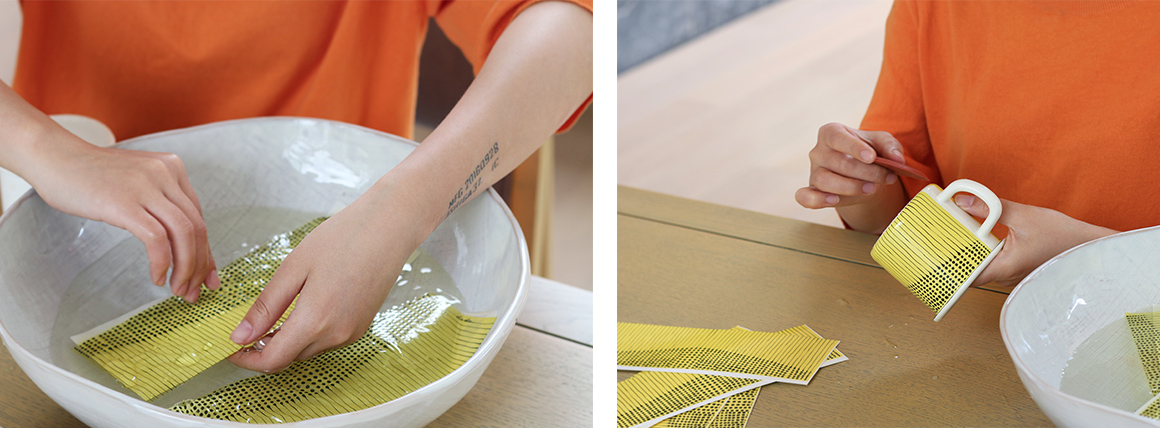
The Appliqué technique
I would like to share an episode of it. Since the appliqué procedure calls for handwork, moreover, JIUSHEN’s product has gained a sound reputation due to its complicated pattern, realising the appliqué is quite time-consuming. 'When the Harvest series came out, the appliqué of a certain batch frustrated us, but all the workers had already gone because of the Spring Festival,' Zang recalled.
'And we three had no choice but to stay in the factory, tearing off all the patterns and remaking the appliqué…for three days and nights.' It was a freezing-cold winter.
'…Our fingers were frostbitten.’
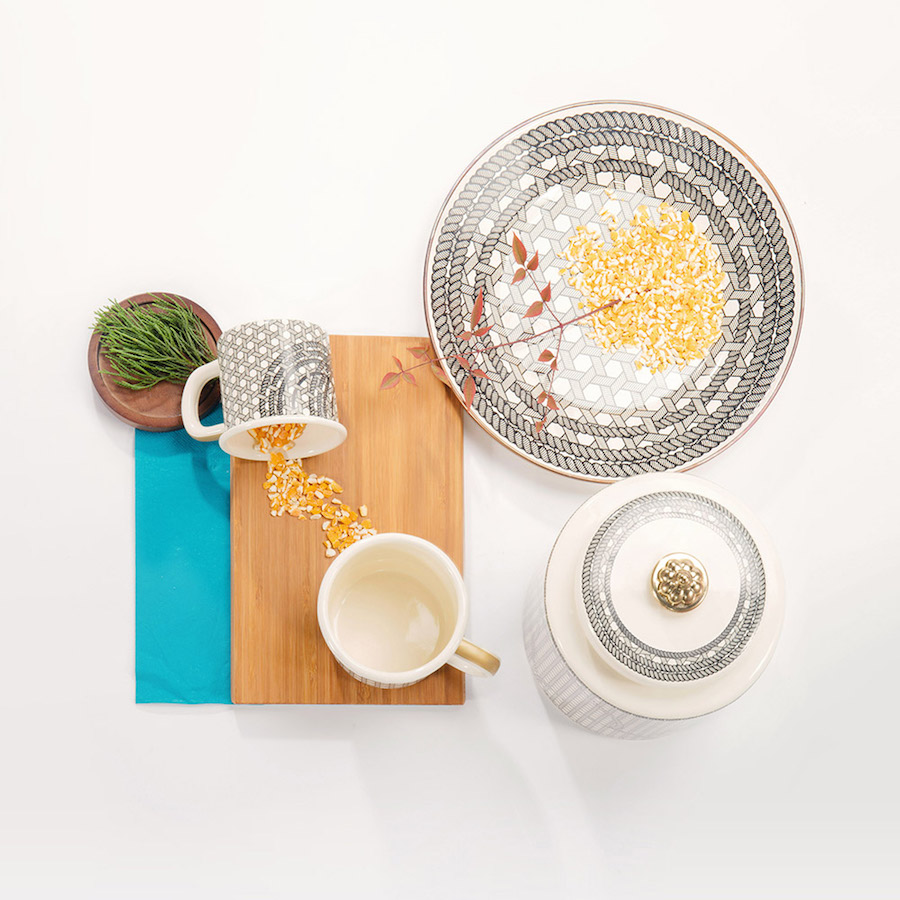
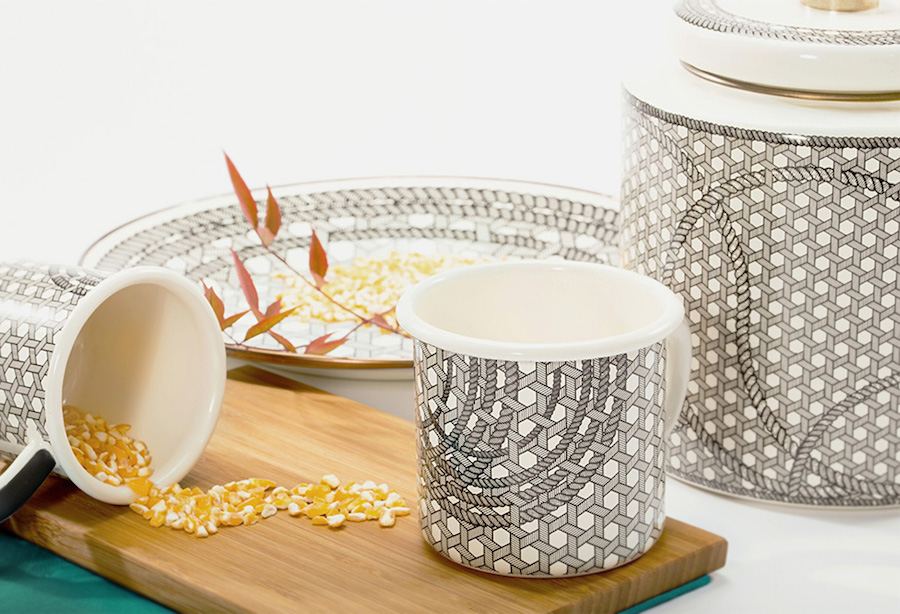
Harvest
Apart from the Harvest series, JIUSHEN has four main series and a single-product set. Among them, the 'Flowing World' collection is characteristic of its dermatoglyphic pattern. The series narrates the origin story of enamel: it firstly appeared in Egypt, then reached China through the Nile and the Maritime Silk Road. The pattern of flowing water suggests that legendary journey.
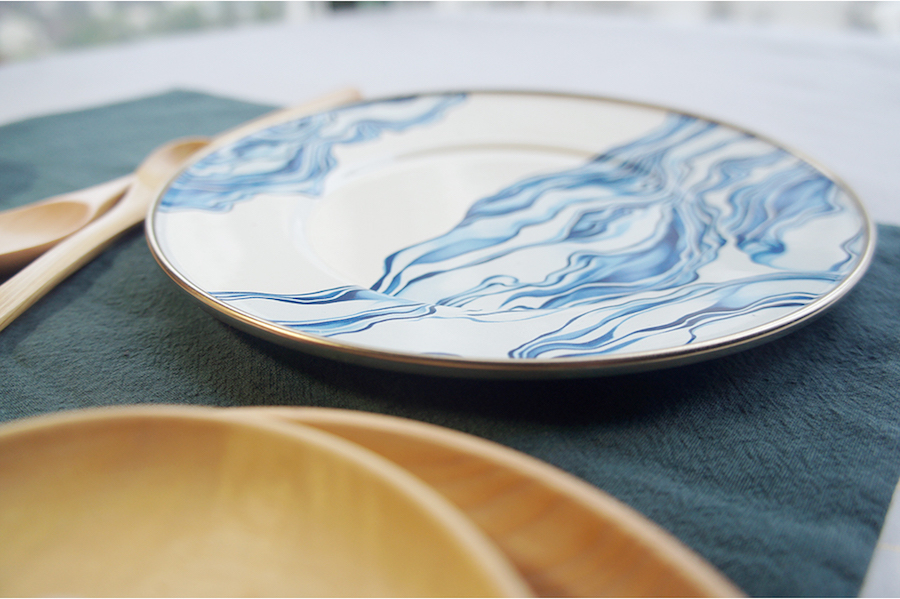
Flowing World
The inspiration of 'The Thread' originates from the crime friction Points and Lines of Seichō Matsumoto. The stream of consciousness is realised by the disordered patterns, which reveals the sense of postmodernism.
The Thread
'The Gogo Family’ series is a collaboration with an Italian designer in memory of the Chinese rooster year.
The single-product series 'September' combines the enamel with wooden craft, demonstrating the concept of 'eating alone'. The Chinese poet Hai Zi once wrote a poem named September; afterwards, a folk singer composed a song from it. The melody was desolate, like a lonely fellow waiting for his love, and that is how the series was inspired.
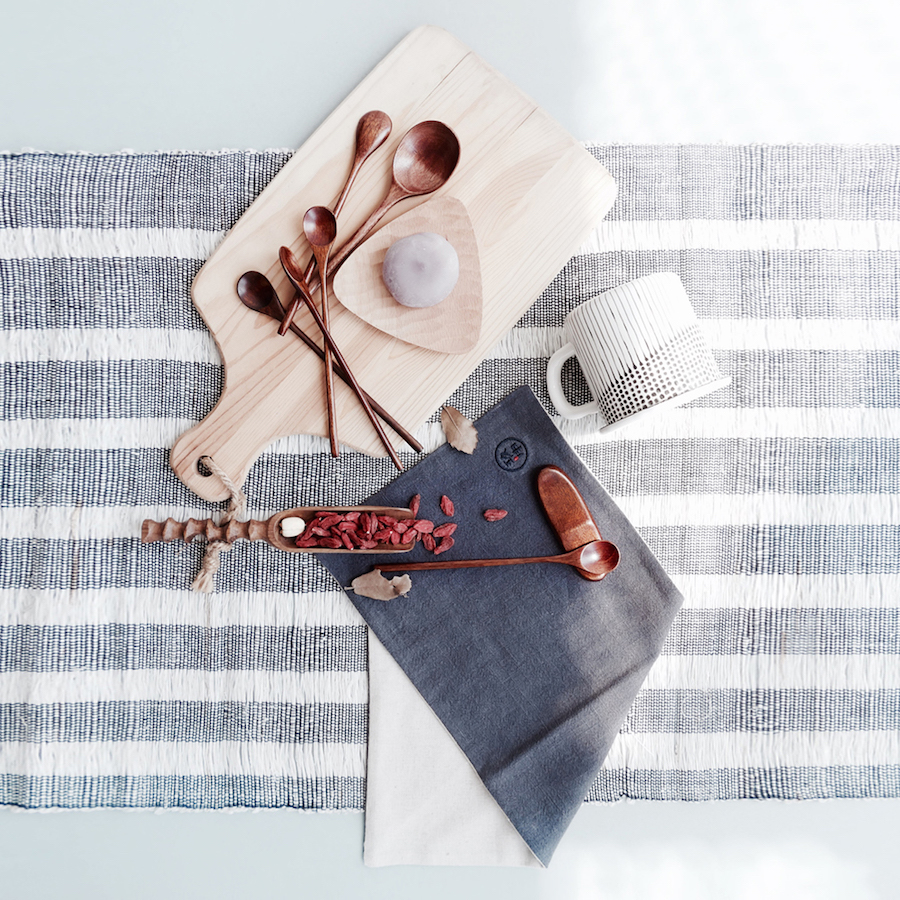
September
JIUSHEN’s latest series 'Eat Your Way' is collaborated with the graphic designer Xiuzhi Zhang. She yarns for going to a picnic or travelling with delicate vessels, but the fragile articles may be broken during the long journey, which makes the enamel the best choice. 'We want to reveal that, even in an ordinary afternoon of the weekend we still need to reward ourselves with a hearty picnic, to gratitude our efforts and passion. It is like the feeling of ritual.' It deserves to mention that this series develops a square enamel plate, which is a unique invention.
Eat Your Way
Perhaps because of these series remind me of my childhood, I am quite curious about the anecdotes of the three founders with enamels. Granted, Xie was brought up among enamel wares, his father’s enamel collection and products were nearly everywhere at home, while his kindergarten was right opposite the enamel factory belonged to his father.
Zang mentioned: 'What impresses me most is the meatball soup made by my kindergartener, it was served in a white enamel bowl with light green figures. After sprinkling a handful of scallions, you would enjoy the hot, steaming soup, accompanied by other children.'
'For us, JIUSHEN means inheriting, returning and remaking. The enamel has already faded away from the common topic, but we just can’t let it go. When you asked us about the story with enamels, each one of us could recall some stuff. It symbolises our childhoods. We expect it to reappear in peoples’ views more artistically. That is what JIUSHEN has pursued. JIUSHEN is just like a feast, a feast of enamels.'
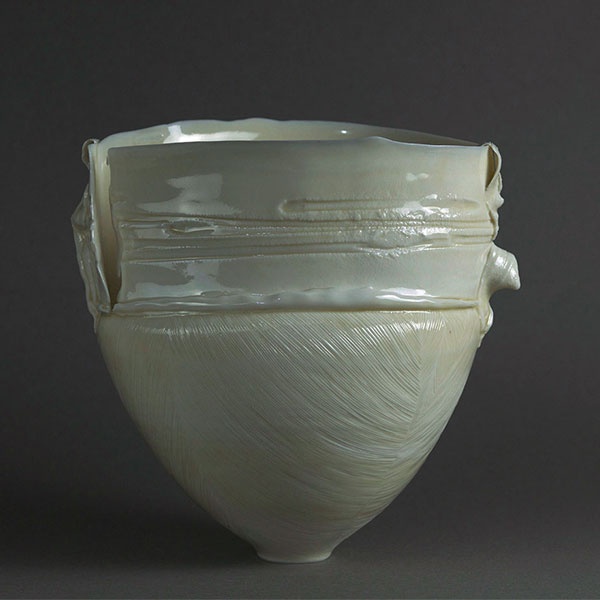
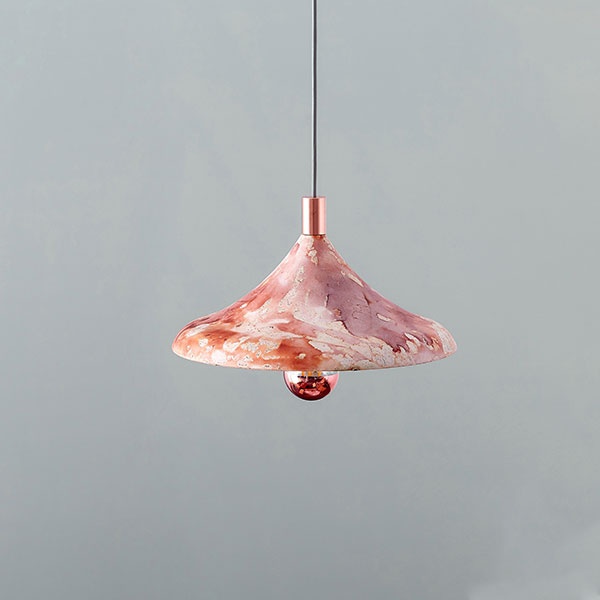
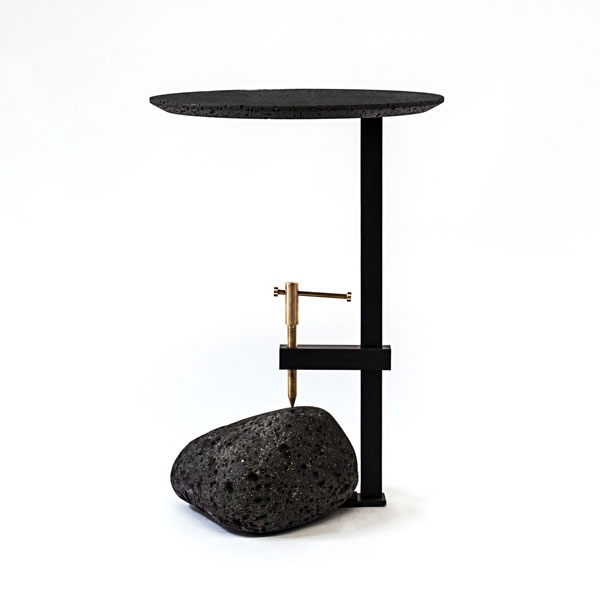
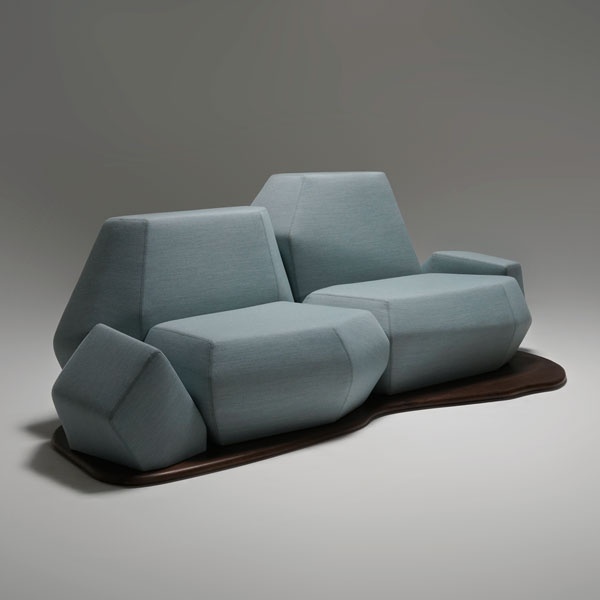
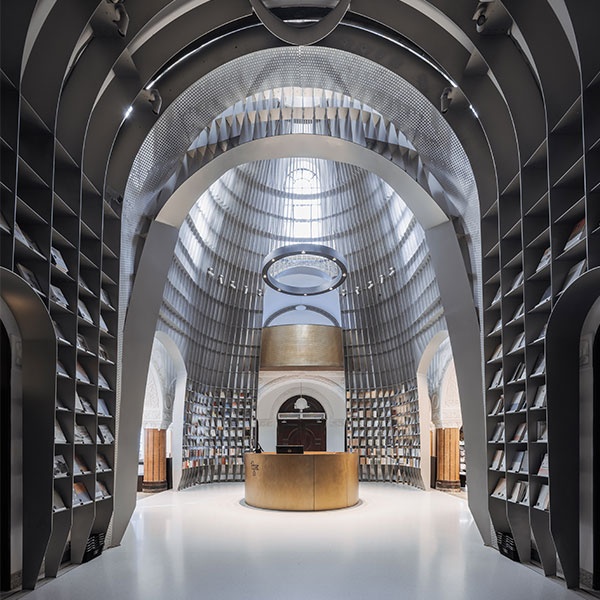
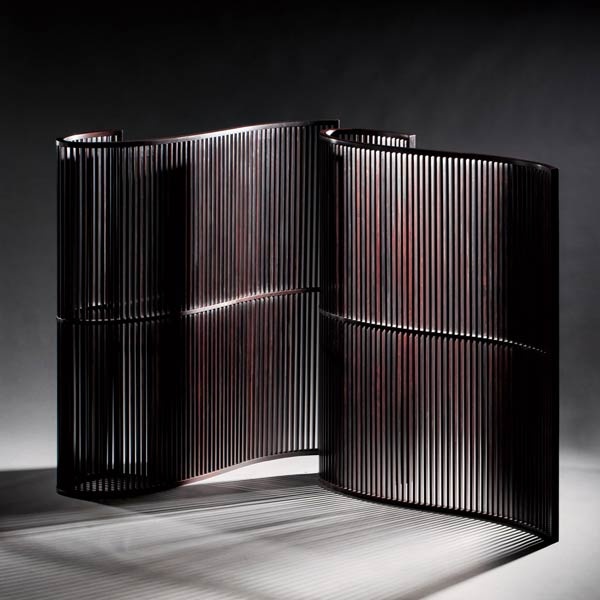
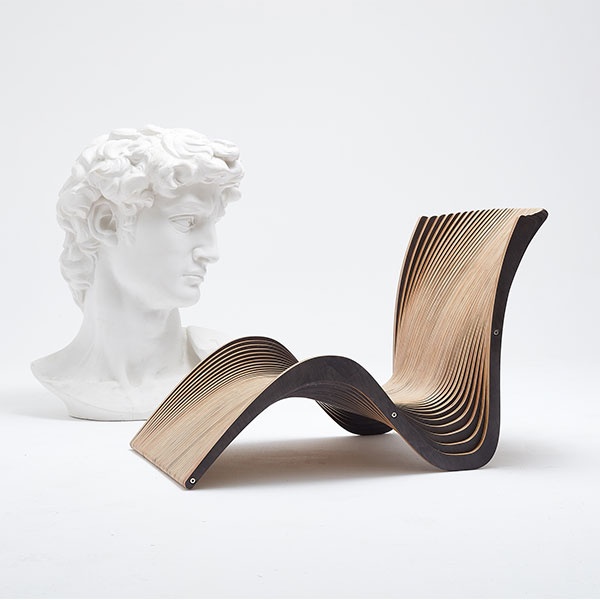
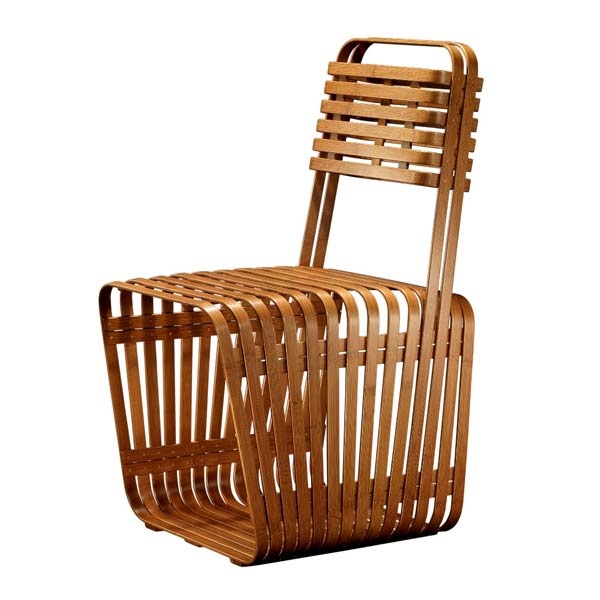

1 / 31
show thumbnailsnext picture previous picture start slideshow close lightbox